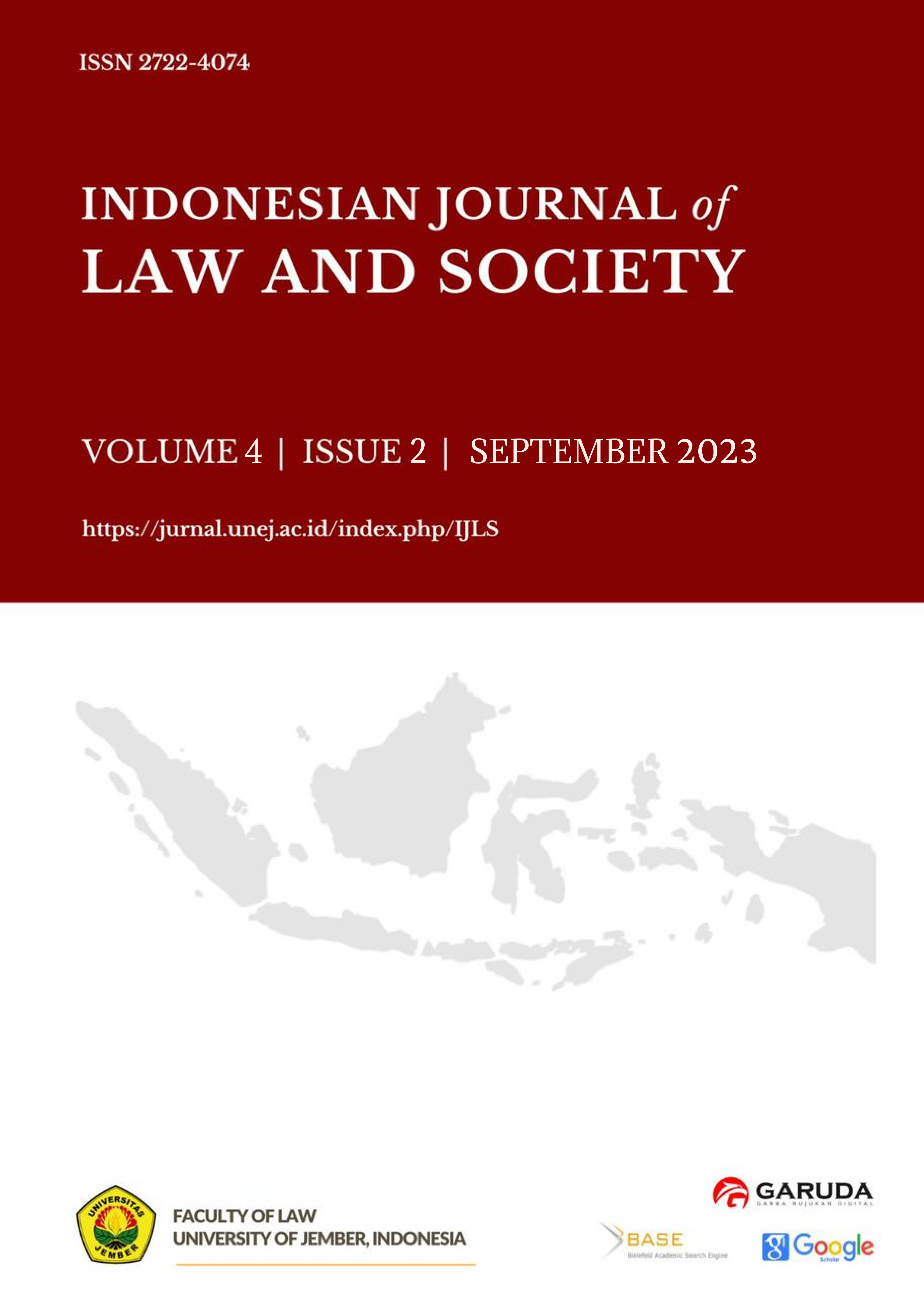The Phenomenon of Child Marriage in the Pandemic Based on Legal, Social and Health Studies
DOI:
https://doi.org/10.19184/ijls.v4i2.38638Abstract
This research reviews the phenomenon of child marriage during the pandemic, from a legal, social and health perspective. Based on data from UNICEF, Indonesia ranks eighth in the world with the number of child marriages reaching 1.4 million children. Data on child marriage from the 2018 National Socio-Economic Survey recorded that the number of child marriages in Indonesia was quite high, reaching 1,220,900 incidents. This means that about 1 in 9 women aged 20-24 get married before the age of 18. This research was conducted in Jember Regency by taking 17 representations in 9 sub-districts. This study uses a qualitative method with an observation and interview approach. From the results of the study, it was found that a small proportion of informants were legally married at Religious Affair Office because they had not met the minimum age for marriage, which was 19 years. Some informants applied for a marriage dispensation at the Religious Courts, and some falsified the date of birth by increasing the age so that it meets the minimum age for marriage. Before getting married, a small number of informants got engaged first and most of them did not go through the engagement process. Informants who are engaged are usually engaged for a relatively long time, between 10 months to a year and then get married. Child marriage is against fundamental rights and freedom of children. The recommendation from this study is the need for more intense socialization about the rules of marriage age and the dangers of early marriage, especially related to their health.
Downloads
Downloads
Published
Issue
Section
License
The Indonesian Journal of Law and Society has CC-BY-SA or an equivalent license as the optimal license for publishing, distributing, using, and reusing scholarly work. Authors who publish with this journal retain copyright and grant the journal right of first publication with the work simultaneously licensed under a Creative Commons Attribution-ShareAlike 4.0 International License that allows others with permission from the publisher to share the work with an acknowledgment of the work's authorship and initial publication in this journal.


